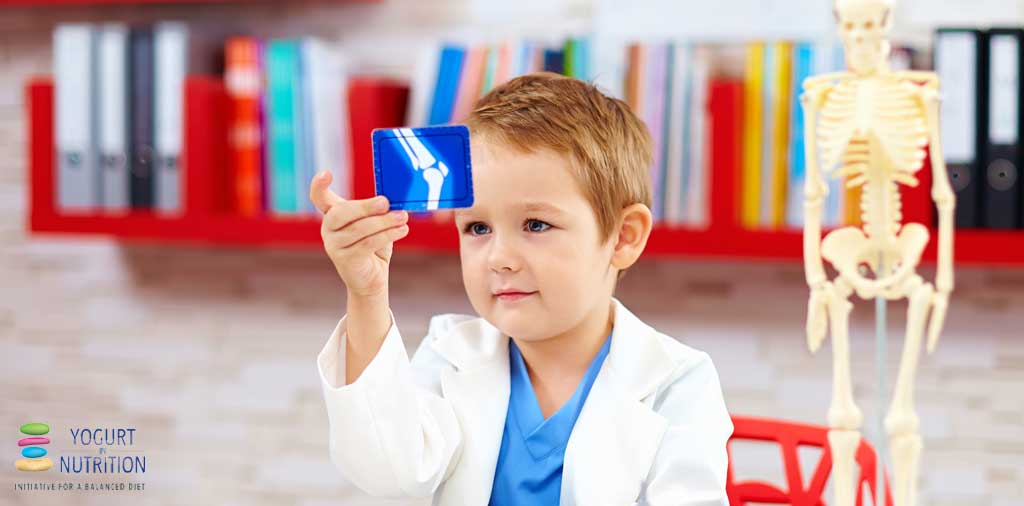Bones don’t tend to spring to mind when it comes to preparing our kids for a long and healthy life. But childhood and adolescence are the best time to focus on bone health as almost all our bone mass is built up during these early years. Acting now can set them up for robust bones throughout adulthood and prevent breakages in their older age.
And the best way to put them on the right path for super-strong bones? Encourage them to eat healthily and get plenty of exercise, say the authors of this article.
Dairy foods are a treasure trove of nutrients that are essential for bone growth, including calcium, protein, magnesium, potassium, zinc and phosphorus. Getting lots of exercise during childhood is also recognised as being important for building strong bones.
But, there’s still much we don’t know about bone development. The authors studied a group of young children in Brazil to find out more about the effects of dairy foods and exercise on bone strength, measured by bone mineral density (BMD), and to see if there were any differences between boys and girls.
Higher dairy intake was associated with higher BMD
The researchers examined the children’s diets at 4 years of age and again at 6 years. They found that 4-year-olds drank milk more often than 6-year-olds, but this was compensated for by 6-year-olds eating more yogurt and cheese.
Scans were done to measure BMD when children were 6 years old. Higher daily intake of dairy products was associated with higher total-body BMD and lumber-spine (lower back) BMD both in boys and in girls. This association was greatest for children eating at least three dairy servings each day.
‘Our study provided evidence of a positive association between consumption of dairy products and total-body and lumber-spine BMD at early age.’ – Bielemann et al, 2018.
Weight-bearing exercise helps build strong bones
Just as muscles get stronger when we use them, bones do too. Although any physical activity is good for general health, weight-bearing activities such as running, climbing, jumping and walking are particularly good for building bone. The forces these activities exert on bones, particularly at weight-bearing sites such as the lumbar spine, make them stronger.
In this study, mothers’ reports of higher physical activity at 4 and 6 years of age were associated with higher BMD at 6 years of age in boys only. Physical activity was also measured in 6-year-olds using a device strapped to the child’s wrist. Higher levels of physical activity measured using the wrist device (overall physical activity and time spent in moderate-to-vigorous physical activity) were associated with higher total-body BMD and lumbar-spine BMD in boys, and lumbar-spine BMD in girls.
‘The consumption of dairy products and PA [physical activity] seem to be equally important to BMD in childhood.’ – Bielemann et al, 2018.
The authors concluded that higher intake of dairy foods and a higher level of physical activity in 4–6-year-olds were associated with greater BMD at 6 years of age. Dairy foods and physical activity appear to exert their effects on BMD independently of each other, say the authors.
Find out more: read the original article.



